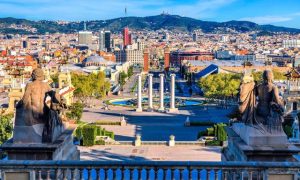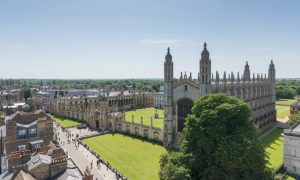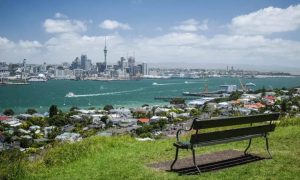Thailand, with its pleasant climate, friendly culture, excellent medical services, and relatively low cost of living, has attracted worldwideimmigrants. For the programImmigration to Thailandof people, having a clear understanding of the cost of living is a crucial step in creating a budget and planning for the future. In this article, we'll give you a comprehensive breakdown ofImmigration to ThailandThe real expenses afterward, including housing, food, transportation, medical care, education and other costs of daily life, give you a clear idea of the cost of living in Thailand.
I. Housing costs
Housing is the most important part of the cost of living. In Thailand, you can choose to rent or buy a home, depending on your needs and budget.
1. rent an apartment
Rent in Thailand varies depending on location, type of housing and amenities. Below is a reference of rents in some major cities:
- Bangkok, capital of Thailand: A studio apartment in the city center rents for about 10,000 to 20,000 baht (about 2,000 to 4,000 rmb) per month, while rents for suburban apartments range from 5,000 to 10,000 baht.
- Chiang Mai, second city of Thailand: Rent in Chiang Mai is relatively low, with studio apartments in the city center renting for around 8,000 to 15,000 baht per month.
- Phuket: Rents are higher during the tourist season, with city center apartments renting for around 12,000 to 25,000 baht per month.
2. buy a house
Thailand allows foreigners to purchase condominiums, but the purchase of a single family home needs to be achieved through specific policies. The cost of purchasing a home varies greatly depending on location:
- High-end condominiums in central Bangkok cost around 100,000 to 200,000 baht per square meter.
- Prices in Chiang Mai and Pattaya are relatively low, ranging from 50,000 to 100,000 baht per square meter.
II. Catering costs
Thailand boasts a wide variety of eating options, from street food to fine dining, with significant price differences.
1. Street food
Thai street food is inexpensive and popular with locals and immigrants alike:
- A Pad Thai or Tom Yum Goong soup costs around 40 to 60 baht (about 8 to 12 RMB).
- A simple street meal including drinks will cost around 50 to 100 baht in total.
2. mid-range restaurant
If you choose to eat at a mid-range restaurant:
- A meal with a main course, drink and dessert usually costs 200 to 500 baht (about 40 to 100 RMB).
3. high class restaurant
High-end restaurants or international chain restaurants are more expensive, with an average meal costing between 1,000 and 3,000 baht.
4. Daily food purchases
If you like to cook for yourself, here are some prices for common food items:
- Rice (1 kg): about 40 baht.
- Eggs (12): about 60 baht.
- Milk (1 liter): about 50 baht.
- Fresh fruits and vegetables are inexpensive and the budget for a week's worth of ingredients is about 1,500 baht.
III. Transportation costs
Transportation costs in Thailand are relatively low globally, depending on the mode of transportation you choose.
1. mass transit
- Bangkok's Metro (MRT) and Light Rail Transit (BTS) fares range from 15 to 50 baht.
- Public bus fares are as low as 10 baht.
- Chiang Mai and other cities rely more on two-bar buses (Songthaew), which are about 20 to 50 baht a ride.
2. Cabs and Internet cabs
- Cabs start at 35 baht with an additional charge of 5 to 10 baht per kilometer.
- Online taxi platforms such as Grab are slightly more expensive than cabs, but more convenient.
3. Private transportation
- If you choose to buy a motorcycle, the price is usually between 30,000 and 80,000 baht.
- Private cars are more expensive, with economy cars costing over 500,000 baht, and monthly fuel and insurance costs of around 5,000 baht.
IV. Medical costs
Thailand's healthcare system is known for being cost-effective, and private hospitals, in particular, are popular with expatriates.

1. Public hospitals
- The lower cost of medical care in public hospitals is available to both local residents and expatriates.
- For example, a general outpatient visit costs about 500 baht.
2. Private hospitals
- Private hospitals offer internationalized medical services at relatively high prices.
- A general outpatient visit costs between 1,000 and 3,000 baht.
3. health insurance
Thailand requires holders of certain visa types to purchase health insurance. The annual cost of health insurance varies depending on the coverage:
- Basic insurance costs about 15,000 to 30,000 baht per year.
- High-end insurance can cost up to 100,000 baht per year.
V. Cost of education
For immigrant families with children, education costs are one of the expenses that must be considered.

1. international school
- International schools in Thailand are known for their high-quality education and multicultural environments, but they can be expensive.
- Tuition fees for one year usually range from 200,000 to 1,000,000 baht, depending on the school and grade level.
2. local school
- If you choose to send your child to a local Thai school, the tuition fees are lower at around 30,000 to 50,000 baht per year.
VI. Other daily expenses
In addition to the above major expenditures, other living expenses need to be considered:
- communication costs: Mobile phone packages range from about 300 to 1,000 baht per month.
- Recreation costs: Movie tickets cost 120 to 300 baht; monthly gym passes cost 1,000 to 2,500 baht.
- utilities: Utilities cost about 2,000 to 5,000 baht per month, depending on the size of the house and the amount of usage.
VII. Summary
Overall.Cost of Living in ThailandIt varies from person to person, but compared to many western countries it is extremely cost effective. If you choose to live a comfortable medium lifestyle, you can budget around 50,000 baht (about 10,000 RMB) per month. If you're willing to be smart about your spending, it can be even lower.
with regards toImmigration to ThailandFor those who do, a clear understanding of the cost of living will help you plan your budget wisely and avoid unnecessary financial stress. Whether it's housing, food, transportation or healthcare and education, Thailand offers a wide range of options for migrants with different budgets and lifestyles.






